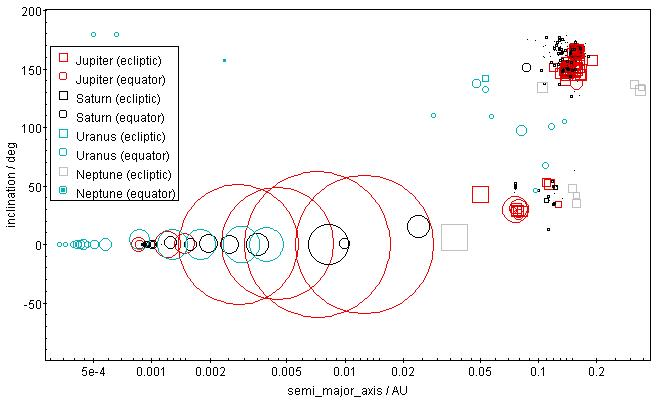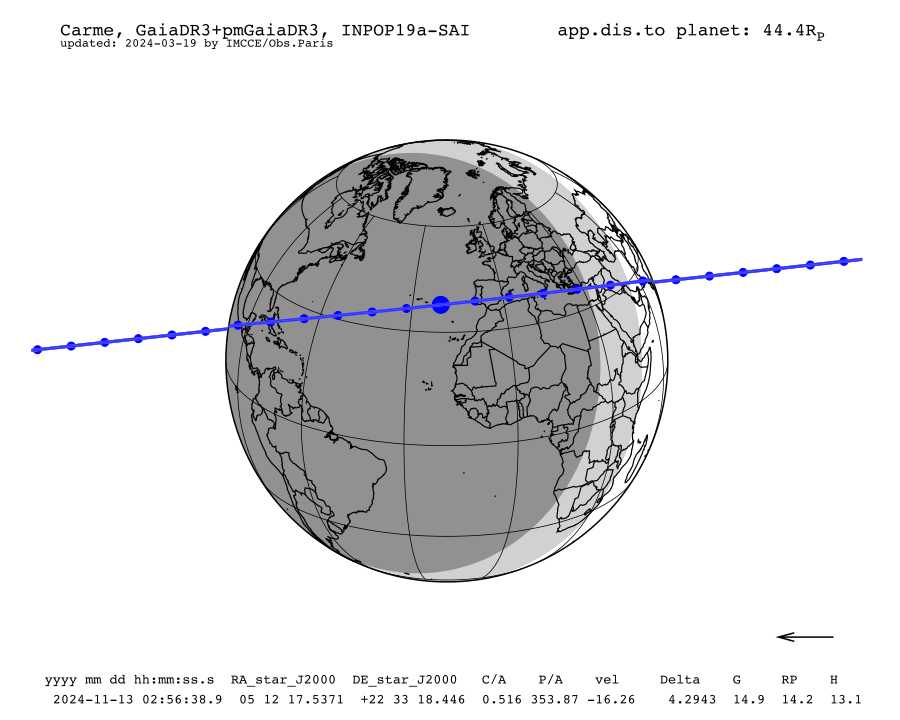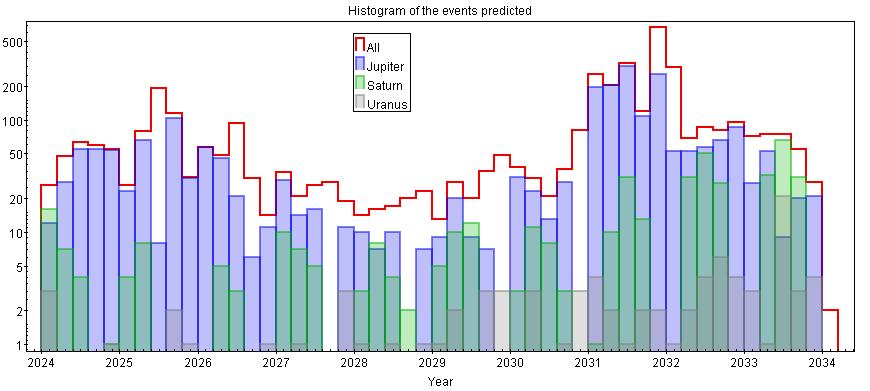Two new Europlanet/VESPA services about planetary moons
- 1IMCCE, Paris observatory, univ. PSL, CNRS, Sorbonne univ., univ. Lille, PARIS, France (hestro@imcce.fr)
- 2Institut Polytechnique des Sciences Avancées IPSA, 63 bis Boulevard de Brandebourg, 94200, Ivry-sur-Seine, France
- 3LESIA, Observatoire de Paris, Université PSL, CNRS, Sorbonne Université, Université Paris-Cité, Meudon, France
- Introduction
In the framework of the Virtual European Solar and Planetary Access (VESPA) of Europlanet, we have developed two new data services for planetary moons: MoonsProp and VOccDB. Both services are encoded using the Europlanet-Table Access Protocol (EPN-TAP) and can be accessed from the VESPA portal (https://vespa.obspm.fr/). The portal enables interoperability between planetary science data services in the Virtual Observatory context, but other access modes are available (see Erard et al 2024, "Virtual European Solar & Planetary Access (VESPA) 2024: Legacy", EPSC2024-355, this conference).
- 1. MoonsProp: physical and dynamical properties of natural satellites
Considering that it is difficult to access the physical and dynamical properties of natural satellites or moons for direct use in workflows, we have developed a specific database. This database, MoonsProp, provides up-to-date physical and dynamic characteristics of natural satellites. It concerns 288 satellites in total (Earth’s Moon, 2 satellites of Mars, 95 of Jupiter, 146 of Saturn, 28 of Uranus, 16 of Neptune). Users can access the size, mass, rotational properties, magnitude, albedo and orbital elements of all planetary satellites (see https://epn.imcce.fr/moonsprop.html for more details). These quantities are extracted from various publications, peer-reviewed papers and articles, books, or possibly web pages, all cited in a list of references (database parameter: bib_reference).
All quantities can hence be extracted for use by other VESPA planetary service necessitating reference value on global physical parameters. One can also derive graphs on statistical properties as shown in Fig. 1.


Figure 1. Distribution of some of the orbital elements distribution of satellites of giant planets in MoonsProp database. Circles and squares are proportional to the square root of the diameter.
- 2. VOccDB: prediction of stellar occultations by natural satellites
The VOccDB database provides the predictions of stellar occultations of bright GaiaDR3 stars by natural satellites of Jupiter, Saturn and Uranus over the period 2024-2033. All events up to visual magnitude 12 for the four biggest Galilean satellites, and magnitude 15 for other satellites are described: circumstances and observational data, including visibility maps (see Fig. 2), date and timing of the occultation, star position and magnitude, duration, etc. (see https://epn.imcce.fr/voccdb.html for more details) and additional information on the proximity of the Moon and the planet. All general circumstances were computed with the planetary and satellites ephemerides available at IMCCE. These data are given in TDB time scale and with present (2024) TDB-UTC; they will be updated as soon as new theories of natural satellites are published.

Figure 2. Example of graphic showing the path of the satellite umbra (here Carme) during a stellar occultation with a Gaia DR3 star on 13 Nov. 2024.
Currently, 4485 events are published in the database. The EPN-TAP format can provide a global view of these predictions. The occurrence of these events naturally increases with the density of the star fields crossed by the satellites. We can therefore see this effect in this database when we plot the histogram of these events showing the transits of Jupiter, Saturn and Uranus in the Milky Way (see Fig.3).

Figure 3. Histogramme of events showing the increase of events during the cross of the Milky Way by the different planets.
- Acknowledgements: The Europlanet-2024 Research Infrastructure project has received funding from the European Union's Horizon 2020 research and innovation programme under grant agreement No 871149.
How to cite: Desmars, J., Hestroffer, D., Thuillot, W., David, P., Erard, S., and Azria, C.: Two new Europlanet/VESPA services about planetary moons, Europlanet Science Congress 2024, Berlin, Germany, 8–13 Sep 2024, EPSC2024-346, https://doi.org/10.5194/epsc2024-346, 2024.